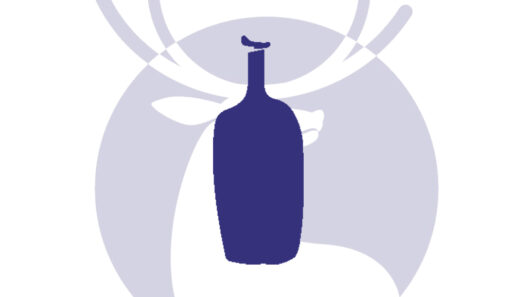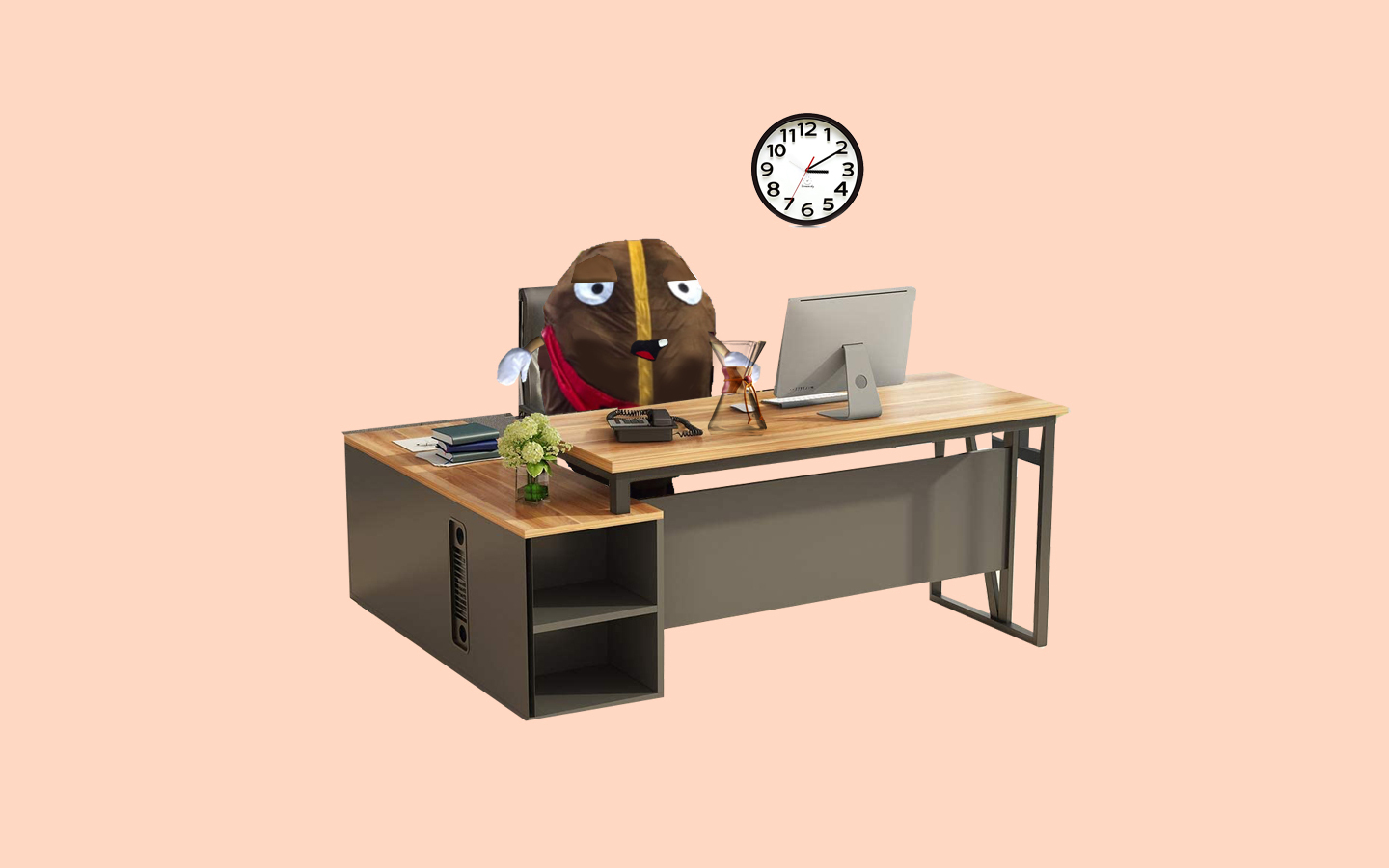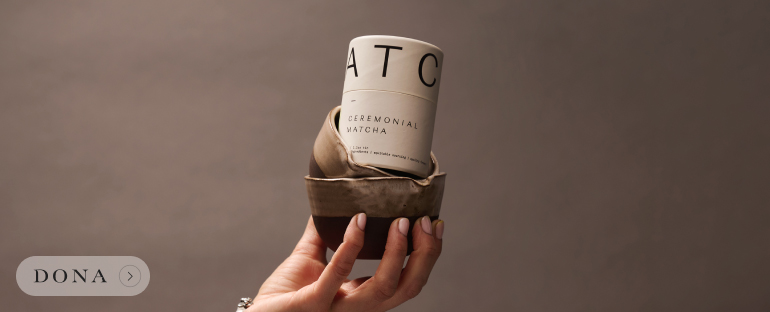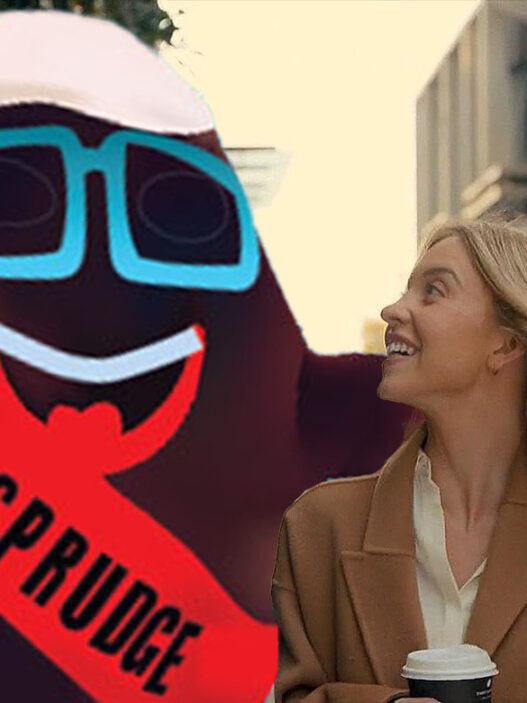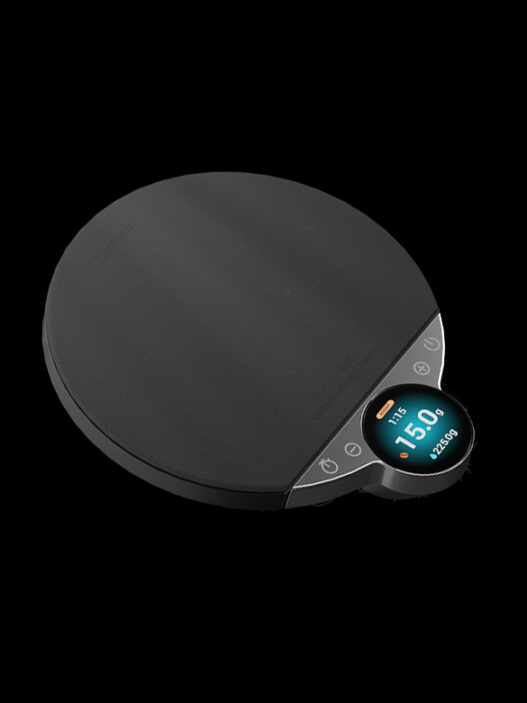Dining and coffee enthusiasts, unite! Welcome to Sprudge.com’s Restaurant Week – a varied and voluminous look at the intersection of coffee and food in Our Modern World. We’ll be running features all week long from the very best writers in coffee.
In this feature, 2012 Sprudgie Award-winning writer and photographer Liz Clayton visits Fort Defiance, a charming restaurant and coffee bar in New York City’s Hurricane Sandy-ravaged Red Hook neighborhood. This feature runs today alongside another happy bit of Red Hook news: after months of digging out in Sandy’s wake, the Stumptown roastery in Red Hook is now officially re-opened. [dropcap]W[/dropcap]e’ve all shown up to work in the morning leaden with dread. Will the day ahead be daunting? Was last night’s closer lazy and messy? Will the entire basement still be submerged in three feet of turgid seawater, receded several feet from the night before, food, refrigerators and ice machines having floated halfway across the destroyed darkness, the kitchen grease trap having flooded a delightfully viscous layer of grease over the contents of the entire establishment for good measure?
This is only a little of what awaited St. John Frizell, owner of Red Hook, Brooklyn’s Fort Defiance the day after Hurricane Sandy. Besides occupying a special place in the heart of Red Hook residents, Fort Defiance — a terribly adorable New Orleans-influenced cafe/bar and restaurant — also occupies a special place in the New York City coffee scene. From Frizell’s love of all things drinkable (he’s a coffee guy as well as a mixologist) launched an anomaly in even as coffee-literate a city as Gotham: a great restaurant with a consistently great coffee program. It’s a rare bird, and, in October, it was a rare bird under a great deal of water. And he was one of the lucky ones.
“The dining room only got about 8 inches of water,” said Frizell over coffee in December 2012, looking around the almost miraculously clean and operational restaurant which reopened earlier that month, with fig scones and nicoise sandwiches flying to tables throughout the restaurant again at full speed.
Frizell opened Fort Defiance in 2009, enthusiastic about bringing his bar knowledge to the growing Van Brunt Street strip of this off-the-beaten-path part of Brooklyn. He’d serve food, of course, too — great food — and it looked like if anyone was going to have great coffee, it would have to be him. (It would be awhile before Stumptown would open, briefly, a tasting room at its now-Sandy-ravaged roastery just up the street. But even that wouldn’t last.)
“I’m kind of known as a cocktail guy, but I was really frustrated living down here that I couldn’t get a good cup of coffee,” said Frizell. “And I swear to god, if I could have, I would have just opened a bar. But most of my restaurant experience is in cafes in New Orleans,” acknowledged the entrepreneur, whose time in the chicory trenches earned him a sound appreciation of the full…possibilities of coffee. (“At the time there was very little going on in New Orleans for coffee, no one really knew what it was supposed to taste like,” he admitted.) But from its inception, Fort Defiance has partnered with Counter Culture Coffee — which means its program has been guided by the able hands of experts like Erin Meister and Katie Carguilo, the latter of whom happens to currently be the best barista in the United States of America. Not a bad coffee pedigree for a juke joint in a flood zone.
“I understood about coffee what I understood about cocktails, which was with the right coffee beans and the right equipment, you’re capable of making the best product in the world,” said Frizell, who sees the revolution of good — or even decent — restaurant coffee as just in the beginning stages for most restaurateurs. He’s on to it, though: “We have the potential to make what someone might consider the best cappuccino that they’ve ever had. That’s a possibility. The potential to create a perfect thing is really cool.”
And then the storm came.
“What happened here was really unprecedented. It hasn’t happened in anyone’s memory — you’d have to go back 100 years or more, and then you’re talking about a different neighborhood geographically, where there were actual creeks that ran through the neighborhood,” said the cafe owner, who’s called Red Hook home for more than a decade. “We expected to get water, kind of windswept rain and gutters overflowing, to deal with that kind of water. We’re used to big puddles and some blocks turning into lakes, we’re used to pumping water out of our basement, we do that all the time,” said Frizell.
“But the ocean came up onto the land. It was a completely different phenomenon than we’ve ever seen.”
When Frizell came to work that dark Tuesday morning, the landscape was barely recognizable. “There was just stuff all over the place, trees down, power lines everywhere, cars with power lines on them, weird stuff had floated around, there was a boat just sitting on the street on Richards Street. Just like, stuff all over the place from people’s backyards, and benches, and sheds and…just stuff.”
And though he’d prepared as best he could, from the floating appliances to the coating of grease, to the streams of water trickling steadily through the wall to the powerless sump pump — the basement was a complete loss. “There was really nothing salvageable down there,” said Frizell. “Our electrical panel, hot water heater, three compressors for refrigerators, two lowboy refrigerators, my Cirqua water filtration system, other random equipment. The big job was emptying out the basement,” St John paused to laugh. “The thing is now, Red Hook has the cleanest basements in New York!
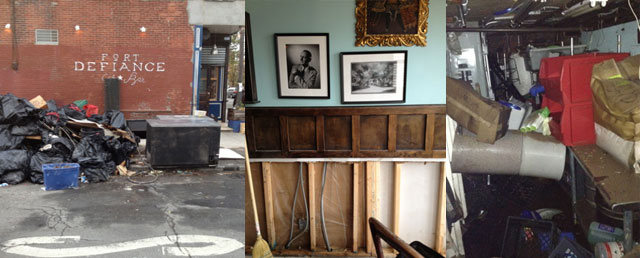
As storm-wounded communities go, Red Hook may have been one of the luckier ones: the relative convenience of traveling to the neighborhood from within the city (even without subway service restored) drew a flurry of volunteers. In many cases, lines wrapped around the corner, Van Brunt overrun with people looking to lend a hand. Frizell says at least 50 volunteers helped gut the Fort Defiance basement, acknowledging the outpouring was so great he’d even had to turn people away. “I had so much help,” he said gratefully. “Just tons and tons and tons of people coming through, people bringing us food, coffee, tools, cleaning supplies, and just a crush of humanity just showing up to pitch in and do the dirtiest work imaginable. So we ended up being closed for 4 weeks and we opened the Saturday after Thanksgiving, and it was just triage. We just cleaned up, heavy lifting, putting stuff out on the street. And the last three weeks were skilled labor help, people showing up with tools to put things back together.” Order was slowly restored, small improvements made. And over time, cocktails began to be mixed again, cups of coffee brewed, tacos assembled.
But, the owner acknowledges, “Our reopening is kind of bittersweet right now.” Other Red Hook businesses old and new — the decimated Fairway grocery, the waterlogged Norton Records warehouse, Sunny’s Bar, and dearer to Sprudge readers’ hearts, the massively damaged Stumptown roastery (now back up and running!) and the first dozen bags of Pulley Collective coffee, among scores of others — remain severely wounded or even destroyed.
To restart Fort Defiance, Frizell relied on the sale of junk bonds — gift certificates to Fort Defiance sold at half their redeemable value — to get back up and running. “If it wasn’t for the sale of junk bonds, I would not have had the operating capital I needed.”
“My goal was to get my business open, and now that I”m open I get to focus a little bit more on Restore Red Hook, which is a fundraising group that I’m on the advisory board for that’s raising money to help the small businesses of Red Hook reopen,” said Frizell, who noted that many business owners were surprised to learn that FEMA relief funds do not apply to small businesses, nor was insurance money forthcoming.
“But yeah — I’ve gotten all I need,” said Frizell gratefully. “I’m up and running. there are people working here who are getting paid. It’s awesome.”
Liz Clayton lives and works in Bed-Stuy, Brooklyn. She’s currently hard at work at a book of coffee photography, which will be published by Presspop in the increasingly not-too-distant future.





